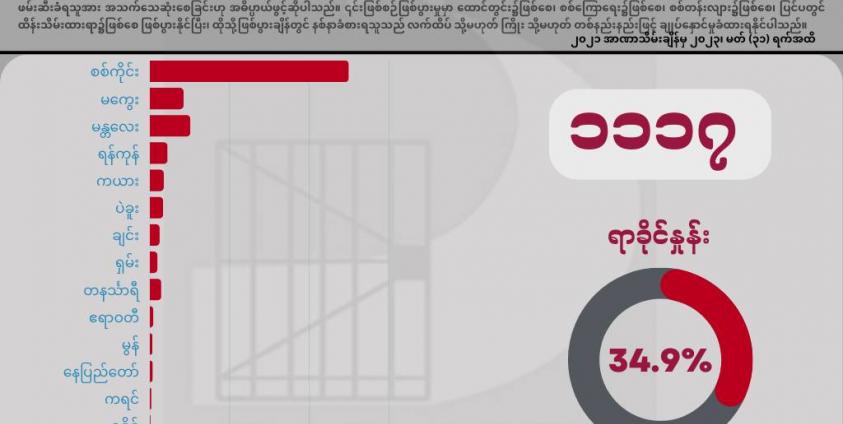On April 3rd, the Assistance Association for Political Prisoners (AAPP) reported that since the military coup on February 1st, 2021-until March 31st, 2023- 1,117 individuals had been killed following their arrests by the Military Council, and most of these incidents took place in the Sagaing Region.
Out of the 17,075 people who were arrested by the Military Council following the coup, 5247 have been sentenced to prison terms across the country. As of March 31st, 2023, there are currently 108 individuals who have been sentenced to death, and are being held in prisons.
If the 42 individuals who were sentenced to death in absentia are included, the total number of people sentenced to death rises to 150. In addition there are a total of 121 individuals who have been sentenced to various punishments including capital punishment, in absentia.
3,843 individuals who were arrested by the Military Council have been released either due to amnesty, or because they have completed their sentence.
On May 11th of last year, a horrific massacre took place in Mon Taing Pin village in Ye-U Township, Sagaing Region. 29 people were brutally shot dead after being tied up behind their hands.
Similarly on March 11th of this year, another gruesome incident occurred in Nam Nein village in Pinlaung Township, Southern Shan State. In this incident, 21 individuals were arrested and subsequently killed. These two massacres are among the most notorious and well-known acts of violence perpetrated by the Military Council.
The term “killing during detention” refers to the act of causing the death of a person, who is being held in custody or detained by a government, law enforcement agency, or other authority.
This can occur in various situations, such as during interrogation, incarceration, or other forms of detention. Killing during detention can be the result of deliberate actions by those in charge of the detention, or it can be the result of negligence, mistreatment, or excessive use of force. Such killings are a gross violation of human rights and potential war crimes.
The definition also emphasizes that such killings occur specifically during the process of handcuffing, tying, or otherwise restraining a detainee in a prison, interrogation chamber, or military barracks.







